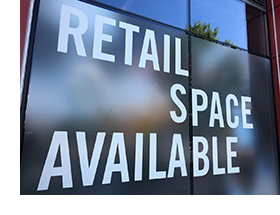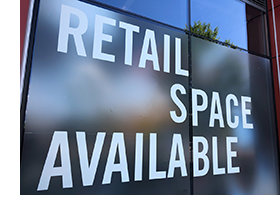For many commercial real estate owners, the real estate bubble of 2008 was far in the rearview mirror as they rang in the 2020 New Year.
Nearly 12 years later, they survived the drop in property valuations, frozen lines of credit, mortgage defaults and renegotiations, which the credit markets had served up in 2008. Little did they know, the arrival of the COVID-19 pandemic in the U.S. would usher in a far greater challenge than they ever experienced.
 The coronavirus impacted every aspect of daily living and forced many companies to reimagine how they do business. According to a June 2020 Stanford Institute for Economic Policy Research Report, over 42 percent of the American workforce is now working from their spare bedrooms, basements and dining room tables, with many commercial office buildings turned into virtual ghost towns.
The coronavirus impacted every aspect of daily living and forced many companies to reimagine how they do business. According to a June 2020 Stanford Institute for Economic Policy Research Report, over 42 percent of the American workforce is now working from their spare bedrooms, basements and dining room tables, with many commercial office buildings turned into virtual ghost towns.
While medicine and science strive to find a vaccine for the virus, many business owners are identifying cost-cutting measures, which will allow their businesses to survive the pandemic and thrive in the future.
Depending upon the industry, most companies are paying as little as 3 percent and as high as 20 percent of their total revenue on the cost of renting space. Personal service firms are spending between 11 and 13 percent on space rental, which is a material expenditure.
If these businesses discover their employees can, and in fact do, work efficiently from home, then the need to spend revenue on real estate space may not be necessary.
On the other hand, some businesses have continued to be, or have become more profitable during the pandemic.
Currently, many office environments practice the “socially distanced” model, where they spread their employees out within their office, creating a greater demand for space. This model may not be well suited for high-rise office buildings, but may be a great opportunity for one-story space, which in the past may have been considered warehouse or light industrial space.
This type of space also provides flexibility in the design and creation of employee training centers, which in the future, can support a more remote workforce.
Fewer concerns about elevator travel and other employee logistics may present excellent opportunities to repurpose space. Oftentimes, this type of space is located in suburban areas closer to the company’s workforce, and away from the crowded downtown area, where they can provide ample parking at no additional cost to employees.
For some service companies, one solution could be a hybrid model, which may still include downtown high-rise space, in addition to smaller satellite offices in the suburbs for employees to use for meetings and more convenient part-time office space. This model may then lead to repurposing of space to make it more affordable to meet the hybrid needs of tenants.
Currently, landlords are just beginning to feel the immediate financial impact of the pandemic.
Many tenants successfully applied and received loans from the Small Business Administration under the Paycheck Protection Program, which means landlords have continued to receive timely payment of rent revenue due to the fact rent and utility payments were also one of the noted qualified expenses eligible for forgiveness under the program.
What will happen once the PPP funds are fully expended and businesses are unable to restore sales and profitability to pre-pandemic levels? In the coming months, it may create future issues with lease defaults.
In speaking with a number of commercial real estate landlords, all indicated there have already been some fallout from the pandemic.
For those businesses already struggling before the pandemic, the virus was the final straw. In those cases, tenants did not renew leases, exercised early termination clauses or negotiated early buy-outs. As one landlord noted, these are “polite failures.”
Other landlords are working proactively with tenants to allow some relief on cash flow during the pandemic, especially for those tenants, who were unable to operate due to regulatory limitations like those imposed on retail locations, restaurants and daycare centers.
“Under the current circumstances, working out some rent abatement program, coupled with extended lease terms, helps to secure a long-term tenant’s ability to stay in business and remain a tenant in the future,” said one landlord. “This is the best way to secure future cash flow without additional costs incurred under circumstance of breach and default, in addition to the cost of securing a new tenant to fill the space, which also includes the potential additional cost of improvements needed to secure a new tenant.”
As far as lenders are concerned, they have to look at the cost of breach and default, if mortgage holders are unable to stay current on payment of long-term mortgage debt. Feedback from multiple landlords indicated they were proactive in reaching out to their commercial lenders to discuss cash flow issues and, unlike 2008, lenders seem open to discussing mortgage alterations and adjustments in order to assist the mortgage holder.
The thought is, most lenders are still looking at the pandemic as a short-term event over the life of a 30- year mortgage. The only exception to this generalization regarding lenders being more flexible under the current circumstances seems to be Commercial Mortgage-Backed Security lenders, whose terms are more complex and highly dependent upon a consistent level of valuation of the underlying properties.
In the chronicles of history, the 2020 COVID-19 pandemic will join the list of many other highly contagious illnesses, which hopefully will be eradicated with the discovery of a vaccine. The impact of the pandemic though, will have changed the way we do so many things in life. It has made a permanent change in the locations we conduct business activities, and the related commercial real estate markets, once again, forced landlords to reinvent their space, making what was old, new again.





